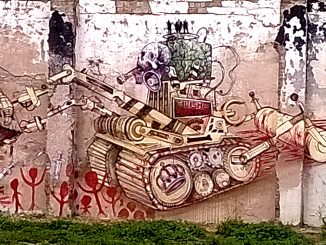
resistance


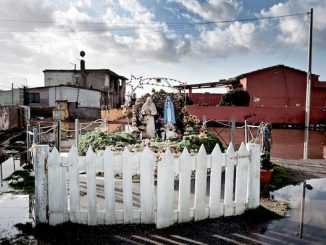
The Idroscalo, a self-grown neighborhood on the coast of Rome
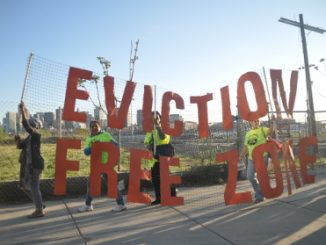
City Life Vida Urbana: How evicted turn into activists
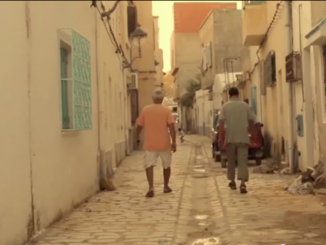
El Haouma, that is, the neighborhood
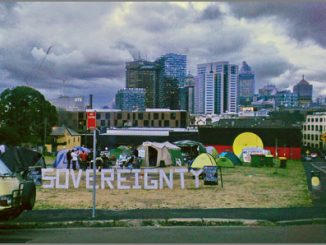
Sydney, a (post)colonial city
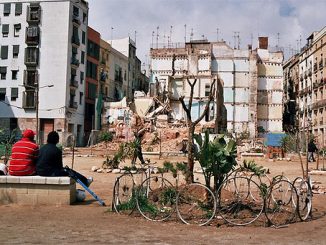
To resist is to win: 10 years in the Forat
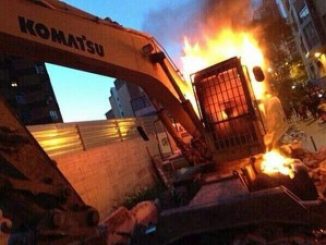
The Rumba of Barcelona (the “Can Vies effect”)
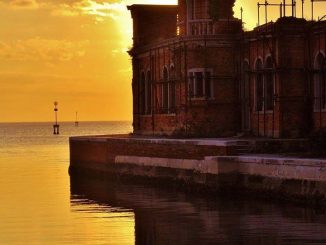
There is life in the lagoon
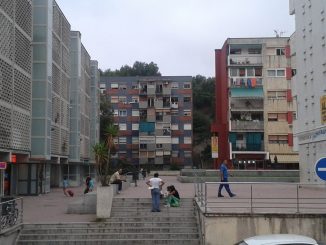
Ciudad Meridiana… exists!
The history of the neighbourhood of Ciudad Meridiana is a perfect summary of Barcelona’s urbanistic schizofrenia. Built in the Sixties on a land accounted as too damp to build a cemetery, with no transportation or services, secluded and unfit to live in, but with a strong neighbours’ movement, it has always been a problematic territory, unknown to the rest of the population: many of its inhabitants started to leave it already in the Eighties, trying to climb socially and spacially, getting over the decade in which the neighbourhood population reached its peak. Since 2001, when Catalonia and Spain were still inside the “housing market bubble”, the immigrants began arriving to Ciudad Meridiana, through mortgages the banks offered crossing the endorsements, and through other tricks that the financial capital used to “infiltrate the world of the urban poor”, as anthropologist Jaime PALOMERA writes in his essay about the neighbourhood. After the crisis began, Ciudad Meridiana was described as an eviction city, and now again for its strong neighbours and squatters movement. Recently there was an interesting debate: the City Council proposed to establish there an innovative “FabLab” related with MIT, but the neighbours reclaim that same spot for a food bank, much more useful to face the growing poverty of many families [see article here].
- Jaime PALOMERA (2013) “How did finance capital infiltrate the world of the urban poor: home ownership and social fragmentation”, International Journal of Urban and Regional Research [download pdf – article on Wiley]
- Photoreportage in Diagonal: “Infiernos y solidaridades en Ciudad Meridiana“
- Ciudad Meridiana PHOTO ALBUM by José Mansilla, 2013 (and one 1966 photo).
- Some more references: La Directa “Resistance in Eviction City” :: Lavanguardia.com “To invent or to eat?” :: elperiodico.com “Rice, oil and milk… or research and development?” :: Elpais.com “Ciudad desahucio” (eviction city), 20minutos “Villa desahucio” , Abc.com “Three evicted families establish in the squatted building”
- Links: Associació de Veins de Ciutat Meridiana :: Associació 500×20 Prou Especulacio :: Some questions to Associació 500×20 [in PDF]

Conference in Bolonia: the subjective dimensions of vulnerability
On october 5th, in Bolonia (Italy) the Network for the Evaluation of the Subjective Dimensions of Vulnerability (REDISUV) Chile-Europe will meet for the second time, after the foundational Conference in Paris. The repeated natural catastrophes in Chile made evident the need for a more systematic study about the subjectivities of the communities affected, which are always the product of particular social, economical and political conditions. The program of the conference includes papers concerning natural desasters, but also approaches to the “urban” vulnerability, caused by neoliberal policies as the one our group has been studying in Barcelona.
- Bolonia, Thursday september 5th, 10am-6pm: “Vite invisibili: dimensioni soggettive della vulnerabilità sociale“, program in PDF.
- Davide Olori (2013) “Taking over the center to oppose evictions: the case of the Inmuebles Recuperados Autogestionados en Santiago de Chile” [PDF, italian]. “The urgency for housing after the earthquake forced towards the aggregation of both informal organizations (as neighbours, relatives, co-workers) and formal ones (political, parties…), so causing dynamics of rupture and recomposition among interests, hierarchies, relationships…”
- Fabio Carnelli studied ethnographically the consequences of the earthquake in L’Aquila (central Italy) some years after: the “militarized” solution brought again to life the traumas, and increased the vulnerability of the population. See Sismografie on Il lavoro culturale webpage. And also Rita Ciccaglione’s article, one year after the earthquake in Emilia Romagna.
- Caterina Borelli jsut published on academia.edu her PhD thesis about Sarajevo: “La ciudad post-traumática” (see also this older post)
- Stefano Portelli (2013) “Spatial reordering and social pathology in the periphery of Barcelona: the social impact of urban transformation”, intervención al XXI congreso del International Social Theory Consortium, Copenhagen, June 26-27th [Coming soon!]
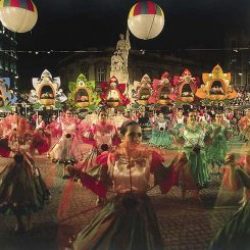
Two cities in the same Lisbon

Memories of the resistance: the Flor de Maig
The story of the city of Barcelona can be told focusing on its modifications: its urban plans, projects and transformations, i.e., on what changes. But the story of the city can also be told focusing on what remains, through what survives, what resists on the great void created by the struggles over the territory. Some elements – parks, places, buildings, corners – as classic sociologists said, maintain an identity, some relationships, and an enormous popular meaning. This is the case of Flor de Maig, the emblematic building of one of the big workers’ cooperatives of the XIX and XX century, which conveys the memory of Poblenou: a memory of struggles and resistance. Since 2012, some residents recovered the building, and transformed it into a place of denunciation against the neoliberal direction that the city of Barcelona is undertaking, or, as their website says, to give an answer to the needs, the challenges and the unsatisfied desires of the contemporary capitalist city. Will they succeed?
- José MANSILLA (2013) “Nunca nos fuimos. Frontera, Memoria y Resistencia en la Flor de Maig”, Paper delivered at III Jornades Doctorals d’Antropologia Social. University of Barcelona, June 5th and 6th, 2013. Barcelona.
- Webpage of Ateneu Flor de Maig :: Video of the day of the reopening :: Photos of the centenary on the webpage of the Historical Archive of Poblenou :: Sone history of the Ateneu on Històries del Poblenou webpage: part1 – part2
- Isaac MARRERO (2003) ¿Del Manchester catalán al SOHO barcelonés? La renovación del barrio del Poblenou en Barcelona y la cuestión de la vivienda.
- On the workers’ cooperatives in Barcelona: Marc DALMAU, Iván MIRÓ, Dolors MARÍN (2010), Les cooperatives obreres de Sants: autogestió proletària en un barri de Barcelona (1870-1939), Barcelona: La ciutat invisible.
- Our researches on Poblenou (2006): “El Pla de la Ribera: el veïnat contra la dictadura” :: Entrevistes a Can Ricart :: Video “Des del Ressentiment o la batalla de Can Ricart” :: Mapa de afectació de Can Ricart :: More posts on Poblenou

WHOSE megaevents?
Who were London 2012 Olympic Games for? Were they for the athletes, the sponsors, the organizers, the global audience? Or were they for us? Our friend Gynna Millan (from UCL Development Planning Unit; in 2009 she presented a proposal for Repensar Bonpastor competition), together with a group of video enthusiasts, studied the impact of the “greatest event on earth” on public spaces, parks and local communities in London. The result is a video archive available on Whose Olympics? website, and a short documentary [watch trailer]. Two years later, we can ask again: who will Brasil’s 2014 World Cup be for? “The world cup is not ours“, write these architects from Río Grande do Sur, quoting Plato. These megaevents are transnational, as the protests they elicit. But the discourse of globalization, that transforms any local event in just another chapter of the same story, it’s not our own either. As we discussed in a recent OACU meeting in Barcelona (where, obviously, we have the precedent of 1992’s Olympics), we are much more interested in differences than in similarities. Anthropology has to keep an eye on correspondences and interrelation on the “macro” level, but it explores mainly the local articulations, what is unmeasurably “micro”: all that can’t be compared, all that is specific to each story, place, events, and to the impact of each phenomenon on every particular territory.
- “Whose world cup?“, campaign of the Comités populars da copa (Ancop), and video “Who wins with this game?”, on the Observatório das metrópoles website. “Is the world cup ours?“, Jessica D’Elias study about evictions in Itaquera (Sao Paulo), on Rachel Rolnik blog :: “A Caminho da Copa“, videodocumental, 2012.
- Luís Edoardo SOAREZ, brazilian anthropologist: “What I know and what I don’t know about the protests in Brazil“ [in italian in NapoliMonitor] :: Raúl Zibechi, Uruguayan journalist: “Why is the World Cup indignant“, LaVaca.com
- Big sport events and human rights violations in Brazil: article by Fabiola Ortiz on PeriodismoHumano.com, and interview with Sonia Fleury on Brasildefato, about the Dossier prepared by the Comités popular da copa [PDF] :: Article and videointerview with the economist and sociologist Carlos Vainer, about conflicts related with big events. Note the reference to the transformation of Barcelona.
- Mauro Castro COMA (2012) “From the Olympic dream to the Porto Maravilha project: ‘eventism’ as a catalyzer for regeneration”. Urbe, v.3, n.2. [PDF] :: Magrinyà and Maza (2005) “Tinglados de Bar-ce-lo-na: la incorporación del puerto”, Scripta Nova, 139 [link] :: and don’t miss this jewel: “Barcelona Brasil group: Bcn is our inspiration and Maragall my idol“.
- Letizia GIANNELLA, Brazilian geographer in Barcelona: Some thoughts about the protests (2013) on Manuel Delgado’s blog.
- An article by Nazaret Castro about the World Cup and the Olympic Games in Río, in Intensificant vides nervioses blog (very much related to ours)

Taksim halkindir- Taksim belongs to the people!
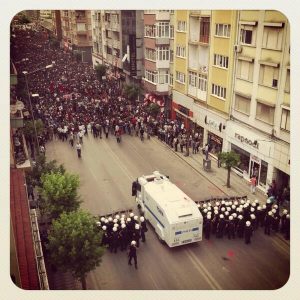 “Early in the morning I find Taksim square already full of people and fully operational, among the flags of the left-wing extraparlamentary groups, and of associations of the civil society, from feminists to LGBT, from kurdish anarchists to muslim anticapitalists and marxists…” A commentary from our correspondent in Istanbul: [in spanish and italian]
“Early in the morning I find Taksim square already full of people and fully operational, among the flags of the left-wing extraparlamentary groups, and of associations of the civil society, from feminists to LGBT, from kurdish anarchists to muslim anticapitalists and marxists…” A commentary from our correspondent in Istanbul: [in spanish and italian]
[audio: http://periferiesurbanes.org/wp-content/uploads/2013/06/CavBella.mp3|titles=Cav Bella|artists=Grup Yorum]…